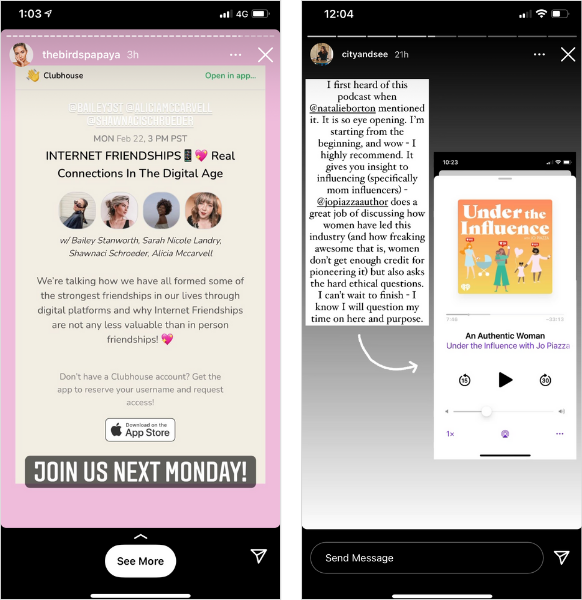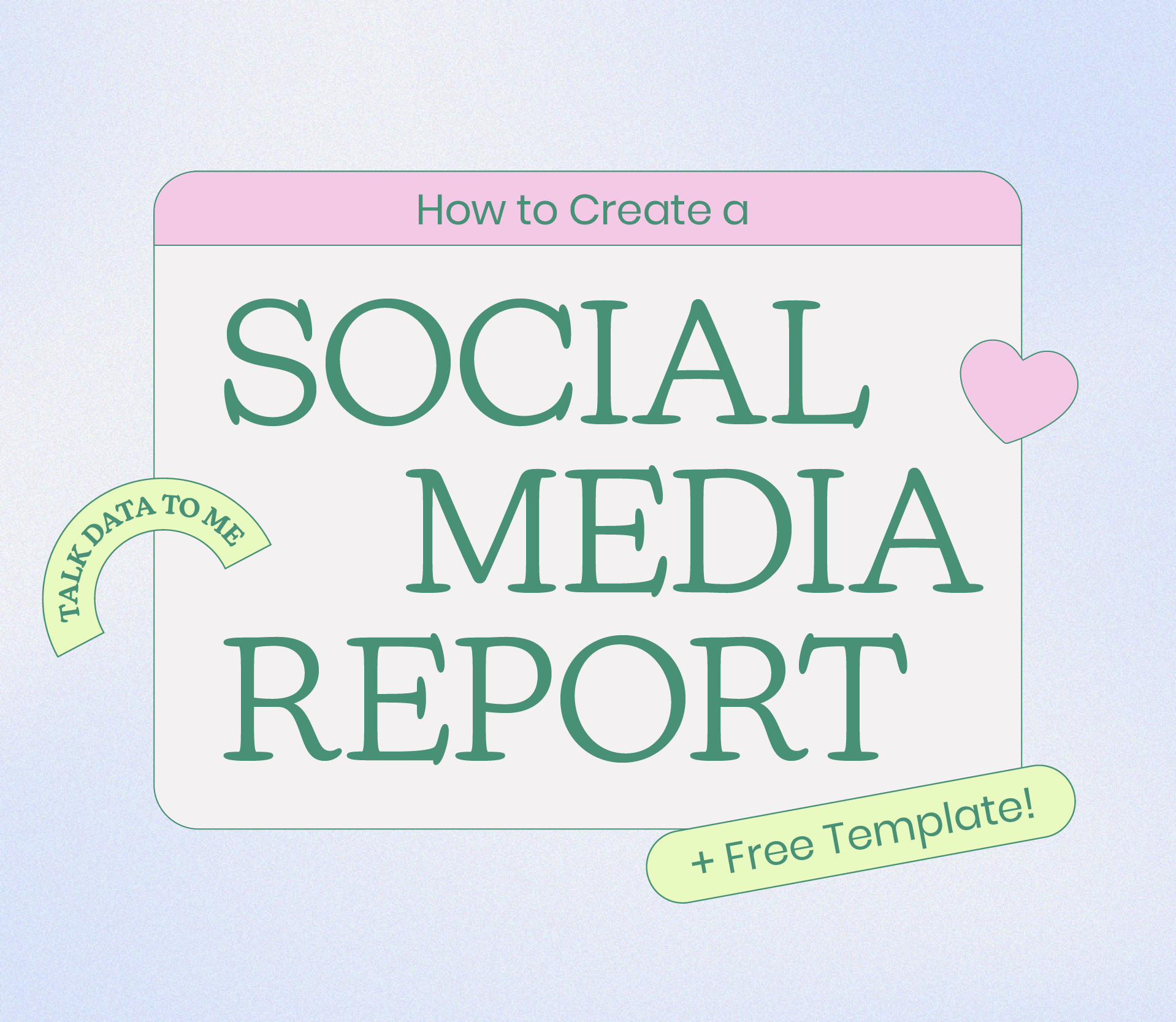Voice marketing is one of the hottest new trends.
From the rise of Clubhouse to the podcast boom, businesses and influencers are using audio content to connect with their communities and reach new audiences.
In this blog post, we’re explaining the different types of voice marketing — as well as how you can use it to build your brand online.

What Is Voice Marketing?
Voice marketing is a way for businesses, brands, and influencers to reach their target audiences through live or recorded audio content.
Radio is the original form of voice marketing, but audio content has exploded in recent years.
Over 55% of people in the US have listened to a podcast, and 24% listen to multiple podcasts every week. Voice-enabled AI assistants are on the rise too — an estimated 8 billion will be in use by 2023.

For brands, voice marketing can be an appealing alternative to costly video production. You don’t have to hire a sound studio to dive into voice marketing — it can be as easy as signing up for an app or recording at home.
And voice marketing makes it easy to cater to your audiences on-the-go.
According to a recent study, podcast listener locations are quite diverse: 64% of people listen while driving, 49% listen while walking around or on foot, and 43% listen while exercising.
It’s a win-win. Brands can reach customers directly and effectively, and consumers can multi-task while absorbing interesting content.
TIP: Voice marketing can create accessibility challenges for people who are Deaf or hard of hearing. Provide a transcript alongside your audio content to make in more inclusive.
Stay up to date on the latest social media resources, tips, and courses with Later’s free newsletter — you’ll get it right in your inbox. Subscribe today!
Voice Marketing Trends
Voice marketing isn’t exactly new — but recently, we’ve seen audio-only platforms gaining real momentum. Here are 3 of the biggest voice marketing trends to take note of right now:
Voice Marketing Trend #1: Podcasts
From business tips to true crime to reality TV reviews, there’s a podcast genre for everyone.
155 million people listen to a podcast every week, with listeners consuming an average of 7 different shows per week.
And the total podcast audience is expected to double in size from 2020 to 2023, so now is a great time to get in on the action.
Here’s how you can get involved in this space:
Produce a Branded Podcast
Simply put, branded podcasts are podcasts that are hosted by a brand or business.
They can be closely related to your brand or service, or tap into wider themes that align with your brand values. For example, Sephora hosts a branded podcast called #LIPSTORIES — a series of relaxed, fun, and honest chats about self-image.
Due to their nature, branded podcasts can be a personable way to reach and connect with audiences on-the-go. They can often feel like an intimate chat between friends.
For brands and creators, branded podcasts can be used to build on existing content themes, or to break into entirely new ones.
For example, The Hey Girl Podcast host Alexandra Elle interviews a rotation of guests that align with her core pillars of sisterhood, storytelling, and self-care:
While it’s slightly different from the content her Instagram community has come to love, it still works. Why? Because it’s still a great fit for her target audience.
TIP: Leverage your existing channels to grow your audience. Regularly promote your podcast on Instagram and encourage your followers to subscribe wherever they listen to their favorite podcasts.
Improve your Instagram strategy by planning and scheduling your posts in advance. Later makes it easy — get started for free!
Invest in Ad Segments
Purchasing an ad spot during a podcast is an excellent opportunity to tap into thriving communities of engaged listeners.
In fact, a report by the Interactive Advertising Bureau said 61% of listeners purchased a product or service after hearing an ad on a podcast.
Here are different types of ad spots to consider:
A podcast-specific promo code, exclusive to those listening.
Short spots that serve as a quick “commercial” for listeners before the episode resumes — 78% of consumers say they don’t mind ads or sponsorship interrupting their listening as they understand it funds the content they value.
Native ads where hosts or guests discuss your product or service.
Advertising on a podcast that aligns with your brand allows you to reach a super-specific audience with a potentially high interest in what you’re selling.
For example, Beluga Baby advertised their baby carrier wraps on The Papaya Podcast‘s episode about childbirth:
Listeners of this particular episode were more likely be new or expectant parents, making it a perfect choice for a brand that specializes in childcare products.
TIP: Think about who your target audience is and the type of content they’d be most likely to tune into — even if the subject matter isn’t 100% aligned. For example, underwear brand ThirdLove regularly sponsors crime themed podcasts.
Voice Marketing Trend #2: Clubhouse and Twitter Spaces
Following the rise of podcasts, social media apps are getting on board with voice marketing.
Clubhouse, an invitation-only audio social network where users can join and listen to discussions, has experienced a huge surge of publicity and growth in recent months.
With real-time audio conversations in virtual rooms, Clubhouse’s user experience is similar to listening to a keynote speaker or panel at a conference.

Despite criticism regarding moderation and accessibility, both small and large businesses are testing Clubhouse’s waters.
The Waves Social podcast by digital agency Hello Arcade frequently hosts rooms as a way to connect with the marketing community:

Alongside apps like Clubhouse, Twitter is rolling out a voice chat room feature called Spaces, which according to Twitter, aims to provide “emotion, nuance, and empathy often lost in text.”

Source: TechCrunch
Platforms like Clubhouse and Spaces present an opportunity to promote your products, services, and events in an exciting new way — so watch this space!
TIP: Social media trends are always changing. Read up on our social media predictions for 2021 for all the latest updates.
Voice Marketing Trend #3: Voice Assistants
AI assistants that operate by voice — think Google Assistant, Alexa, and Echo — have become a staple in homes over the last few years.
Voice assistants can make purchasing easier for customers, with 35% of voice assistant users buying products like groceries and clothes with the technology.
However, there are creative ways to leverage the tool beyond ordering household essentials.
Jameson, a whiskey brand, created a holiday campaign that leveraged the Google Home and Google Assistant apps to help users mix their favorite cocktails.
They created a Google Home skill so when users asked Google to “talk to The Jameson Bar”, the voice assistant would reply with a step-by-step recipe.
As a marketing concept, this works on many levels. The voice assistant provides a valuable, hands-free solution for at home entertainment, while also raising brand awareness and encouraging product sales.
Voice marketing is gaining popularity — and as technology continues to evolve and people find new ways to consume content on-the-go, we’re likely to see even more opportunities arise.
No matter your business niche or size, there’s an opportunity to grow your community and drive sales with this type of marketing.
Get the latest social media trends and news delivered right to your inbox. Subscribe to Later’s free weekly newsletter today!




